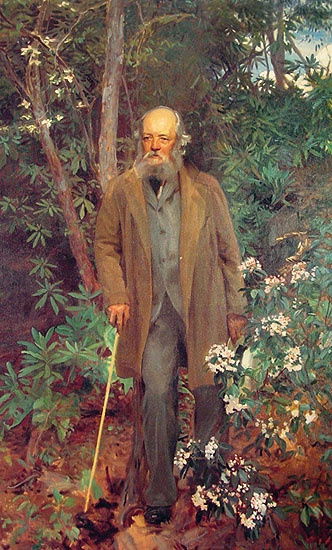From Texas to Central Park
Today, we go from the Texas frontier to Central Park. The Honors College at the University of Houston presents this program about the machines that make our civilization run, and the people whose ingenuity created them.
Frederick Law Olmsted was the founder of American landscape architecture. He left a lasting legacy in New York's Central Park, the Midway Plaisance in Chicago, the campuses of Yale and Stanford, the grounds of the Biltmore Estate, and many other gorgeous green havens across North America. At a critical time in our nation's growth, Olmsted knew how to make a space for nature amid the reckless urban development of American life.
But before he began designing parks, Olmsted had another career as a traveling journalist. In 1852, the editor The New York Daily Times hired him to write on rural life in the Southern United States. The national debate on slavery was at a fever pitch, and the editor wanted to publish an unbiased view based on direct observations. Olmsted had worked at "scientific farming" on Staten Island, and was well versed in agrarian economics. He had also just published a book about his travels in rural England, which had won him modest fame for his "natural and unprejudiced" observations. So Olmsted set out on a journey that would take him from the Southern seaboard to the farthest settlements of West Texas. The three books he later published about this journey make fascinating reading to this day.

Frederick Law Olmsted (1822-1903).
Oil painting by John Singer Sargent (1895)
Olmsted's volume on Texas is a frank look at the multicultural ferment of the Southwestern frontier. His notes on the plantations form an argument against slavery that goes well beyond the obvious moral objections. Slave labor is quite simply an inefficient economic system, one built on the backs of highly unmotivated workers. These workers are kept in a permanent state of ignorance and must have their every need met by their owners. Slavery degrades both slave and master; it must constantly be reinforced by threats and by real violence.
The porous border with Mexico posed another problem in this labor system—though it's the opposite of the one so politicized today. Slavery had been abolished in Mexico, so slaves in Texas ran off quite frequently and headed for the border. Texans of Mexican origin would readily aid the runaways; this led to further tensions with the encroaching Anglo-American plantation owners.
In Olmsted's analysis, the high cost of slave labor kept valuable capital from being spent on public improvements; also, plantation owners weren't paying wages that could circulate and further stimulate the local economy. So slavery was bad business; its costs far outweighed its profits. Why were people still so intent on retaining it? Olmsted suggests it's "the natural lust of authority, common as an element of character in all mankind." Slavery lets you play lord and master, even against your own economic interest. It also spares you the headache of having to negotiate with free laborers.
Back in New York, Olmsted found he'd won the design competition for Central Park. There he would realize his ideal of a common green space equally accessible to all citizens. For southern slaves, the road to freedom was no walk in the park; but America's greatest park designer was their champion.
I'm Richard Armstrong, at the University of Houston, where we're interested in the way inventive minds work.
Olmsted's Southern travel pieces appeared originally as letters published weekly in The New York Daily Times, signed "Yeoman." He then published three books based on his notes:
A Journey in the Seaboard Slave States, with Remarks on Their Economy (New York: Dix & Edwards, 1856).
A Journey through Texas: or, A Saddle Trip on the Southwestern Frontier (New York: Dix & Edwards, 1857). I have used the reprint edition with an introduction by Witold Rybczynski, Lincoln: University of Nebraska Press, 2004.
A Journey in the Back Country (New York: Mason Brothers, 1860), which recounts his return trip from Texas from Louisiana to Virginia.
Olmsted was later contacted by a British publisher to assemble an abridged edition, which appeared as The Cotton Kingdom: A Traveler's Observations on Cotton and Slavery in the American Slave States, 2 vols. (London: Sampson Low & Co., 1861). This edition was republished in 1953 by Alfred E. Knopf, with an introduction by Arthur M. Schlesinger and a blurb by Malcom X. Da Capo Press has kept this later edition in print since 1993.
For his earlier book on England, see:
Walks and Talks of an American Farmer in England (New York: G.P. Putnam, 1852). This is currently available in paperback from the University of Michigan Historical Reprint Series.
On Mexico as a destination for runaway slaves, see:
Sean Kelley, "‘Mexico in His Head': Slavery and the Texas-Mexico Border, 1810-1860," Journal of Social History 37.3 (2004):709-723.
Frederick Law Olmsted (1822-1903). Oil painting by John Singer Sargent (1895) Wikipedia Commons https://commons.wikimedia.org/wiki/File:Frederick_Law_Olmsted.jpg.